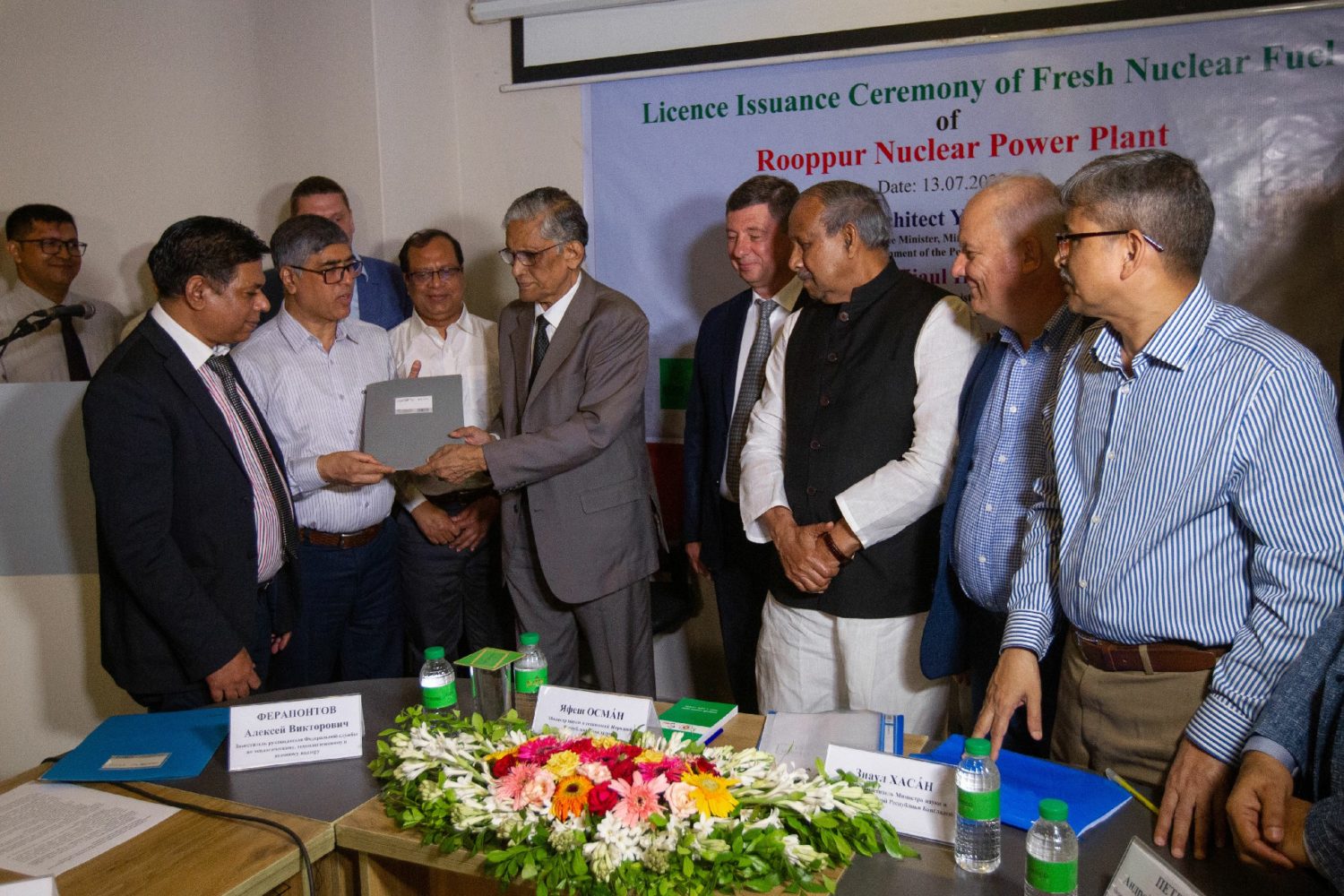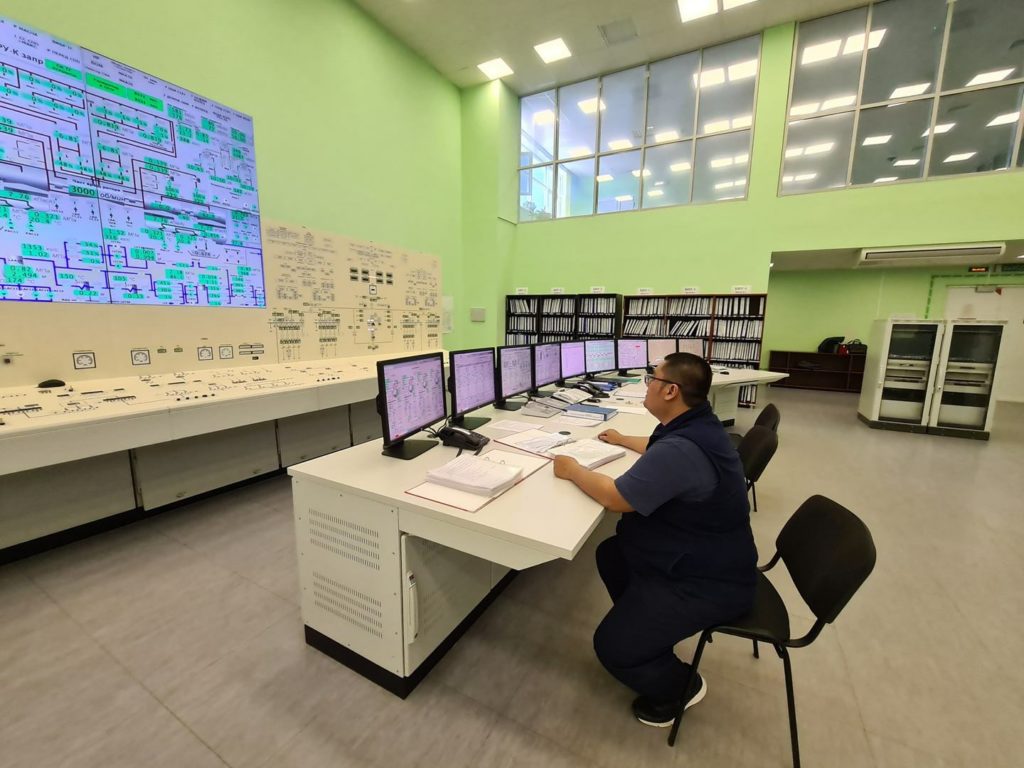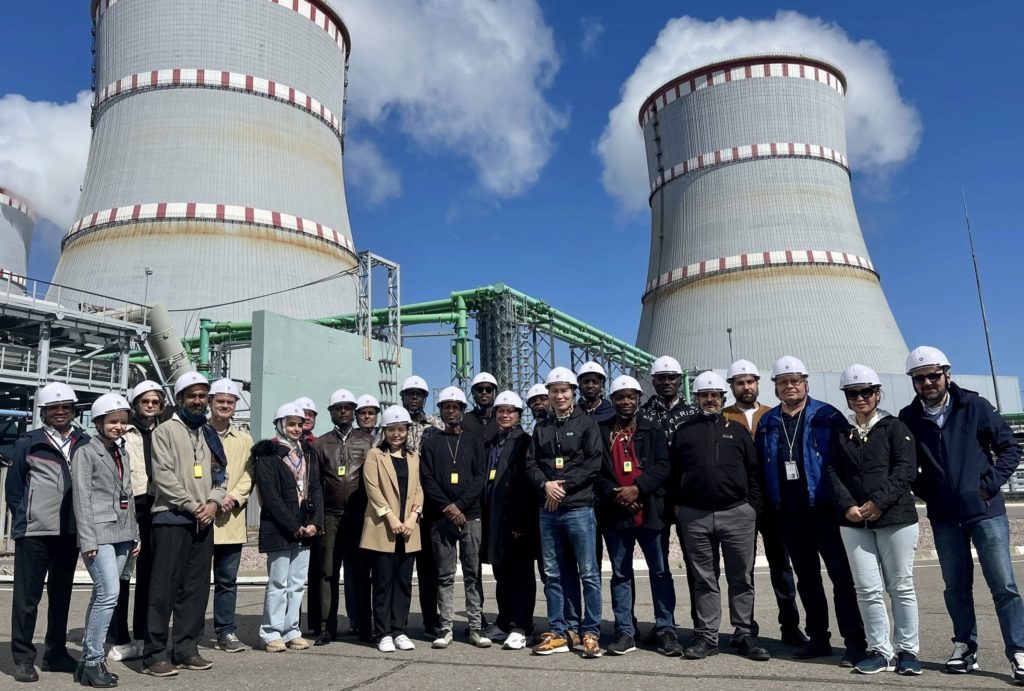
One Step Closer to Launch
back to contentsNuclear specialists from Bangladesh receive training at Rosatom’s education centers. In the early summer, Bangladesh representatives took part in the Russian Federation–IAEA Advanced Nuclear Energy Management School. Meanwhile, construction work at Rooppur is proceeding at full tilt as the reactor has passed a fit-up assembly test.
During the fit-up test, the reactor is assembled exactly as it was assembled at the factory. Its components were unpacked, with the core baffle, protective tube unit and reactor upper unit installed as designed. The protective tube unit is a steel structure consisting of protective and guide tubes, several plates and shells. Its function is to secure fuel assemblies in place and control pressure produced by them.
The upper unit of the reactor is designed to ensure a compact arrangement of the control and protection system drives and movement of in-core instrumentation. This unit is installed with an accuracy of up to 1 mm, using the polar crane with a lifting beam.
The nuclear reactor is a vertical cylinder-shaped vessel with an elliptical bottom. The vessel houses a core and internals. From the top, the reactor is covered by a head with the reactor control and protection system drives and in-core sensor cable inlets installed on it.
The reactor pressure vessel for Rooppur Unit 1 was manufactured at Atommash in Volgodonsk (Russia) and shipped to Bangladesh in August 2020. The RPV and the steam generator were initially transported separately, on a special truck to the cargo port on the bank of Tsimlyansk Reservoir (Don River) in Volgodonsk. They were then shipped by water to Novorossiysk and further to Bangladesh via the Black Sea and the Suez Canal.
In early July, Bangladesh Minister of Science and Technology Yafes Osman announced that the delivery of nuclear fuel to the Rooppur site would begin in September 2023. As Yafes Osman was quoted by Bangladesh media, the fuel batches will be delivered by plane to Dhaka and then transported by road to the nuclear plant’s site. The ground segment of this logistics mission will be under the control of the Bangladesh military.
In addition to constructing the nuclear power plant in Bangladesh, Rosatom is also involved in training plant’s staff and employees for the national nuclear sector. Since 2019, a total of 1,643 specialists from Bangladesh have been trained at the International Staff Training Center in Novovoronezh. The training course comprises theory classes, laboratory training, simulator-based skill practicing, and on-the-job training at the nuclear power plant. Another 52 employees of the Rooppur NPP are currently continuing their training in Novovoronezh. Plans are in place for 367 nuclear workers from Bangladesh to complete a training course in Russia by the end of 2023.

Meanwhile, Bangladesh representatives and their colleagues from 14 other countries participated in the Russian Federation–IAEA Advanced Nuclear Energy Management School, designed for managers in nuclear organizations.
The School’s week-long program aimed to build the leadership skills necessary for developing nuclear infrastructure in countries either embarking on or expanding their national nuclear power programs. The objective of the School was to provide mid-level nuclear sector managers and government representatives from the IAEA Member States with a broad understanding of the key issues and challenges associated with the peaceful uses of nuclear technology. Topics covered at the School included nuclear security and non-proliferation safeguards, emergency preparedness and response, and export controls, all integral parts of the IAEA’s nuclear safeguards system.

This year, Russian experts paid special attention to such topics as small modular reactors (SMRs) and the UN Sustainable Development Goals (SDGs).
Theoretical classes were complemented by practical exercises. For instance, participants were tasked with determining the structure of electricity generation in their respective country and optimizing it for carbon dioxide emissions and supply security, using the PowerInvest tool.
All the participants also visited the Leningrad NPP site. The tour started with the training center hosting an unparalleled full-scale simulator. In addition, the foreign delegation was taken to the site of Unit 6 to see splash pools, a turbine hall and learn more about the operating principles of cooling towers.
Upon completion of the School, all participants received training certificates.




